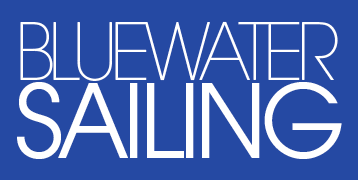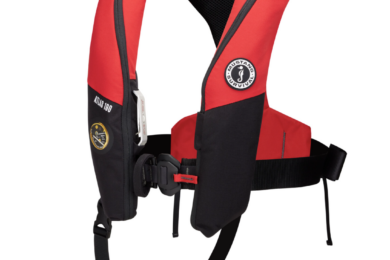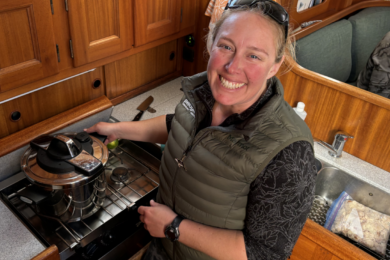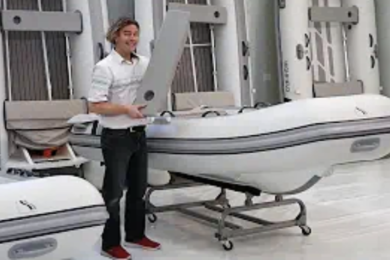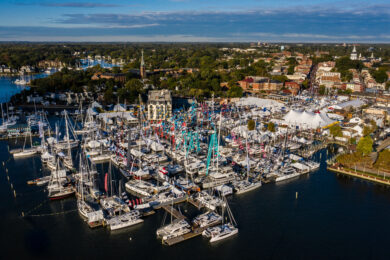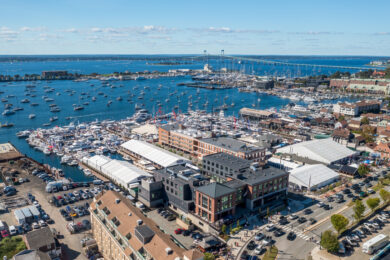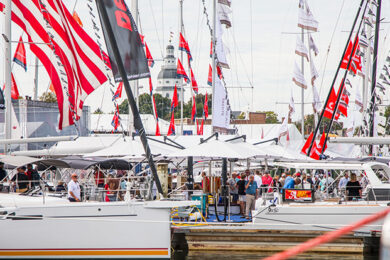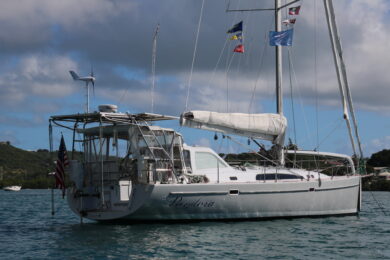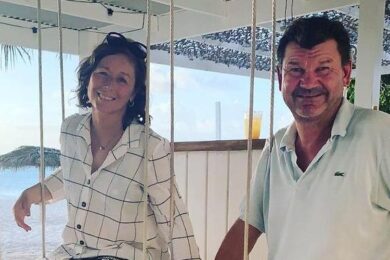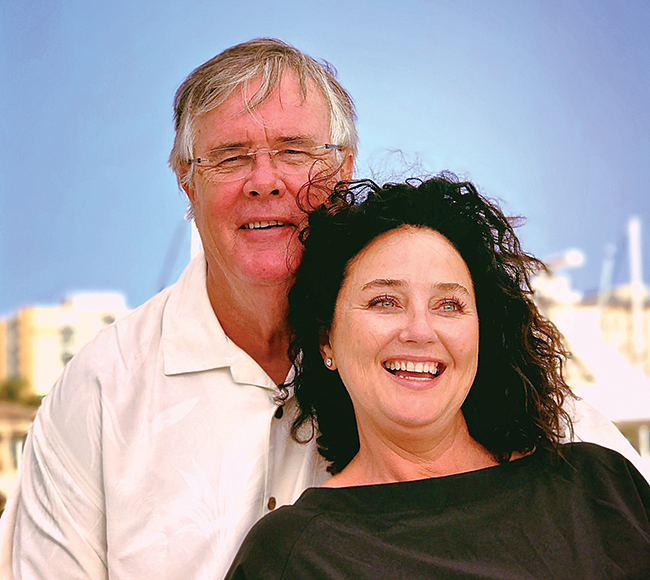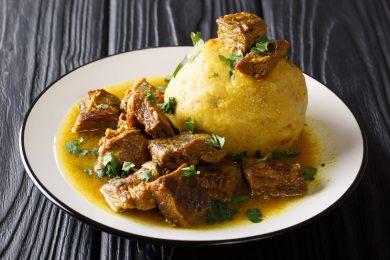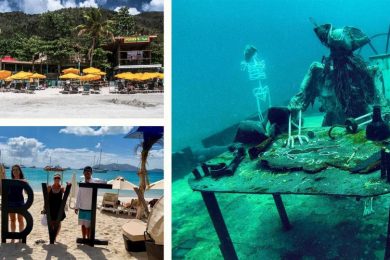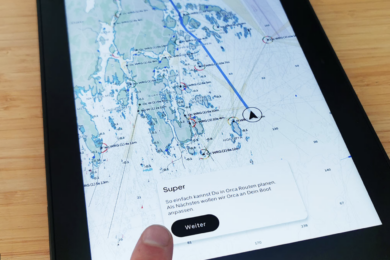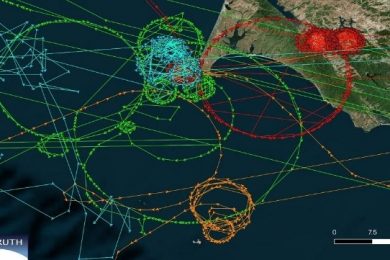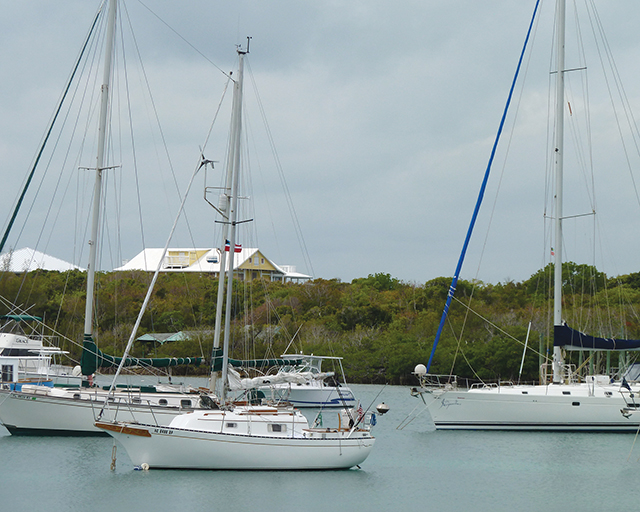Crossing the Gulf Stream in a pocket cruiser (published July 2012)
Scrambling out of the V-berth, I studied the NEXRAD radar images on the chartplotter. I had slept through the 0400 alarm, but the extra couple of hours may have brought us a better weather picture. Yesterday’s angry skies between West End and West Palm had completely cleared, and the weather report showed a perfect window for the return Gulf Stream crossing from the Bahamas to Florida. Except, of course, for those pesky summer “scattered thunderstorms.” If we waited for that prediction to go away, we’d be in the Bahamas until fall.
“Dennis, get up! We’re going!” My mate on the final leg of this month-long, dream-come-true cruise through the Abacos was my old friend Dennis. He had no real sailing experience, but he was an agreeable companion. He signed on for this final week looking for a mid-life challenge. At 62, inactivity had taken its toll and he had lost a step or two. Shoulders slightly stooped and thin of frame, he moved gingerly. Day-to-day activities such as boarding from the dinghy and climbing the stern ladder were difficult, but he gradually strengthened, found his sea legs, and was eager to learn. His trepidation about the Gulf Stream crossing prompted him to request several man overboard drills. He was the first crew I ever had who offered to be a live victim, and we spent a couple of instructive hours in a calm Sea of Abaco honing our skills. The “victim” survived each dunking.
THE BIRTH OF WATER BEAR
Restoring a small boat and taking it on a long cruise has been a dream of mine for years. In 2009, I drove to Midland, Ontario and trailered home a 1980 Bayfield 25. I settled on this pocket cruiser because I wanted a trailerable boat with an inboard diesel for long-range cruising. That combination decreases the pool considerably. Competitors such as the Cape Dory 25D are much heavier and more expensive. The shoal draft of the Bayfield (2’11”) is another plus. The most serious drawback to the Bayfield is the length-on-waterline. Due to its clipper bow and bowsprit, the LOW is only 19’8”, yielding a theoretical hull speed of 5.9 knots and the interior volume of a 20-foot boat. But for my purposes, the trailerability (6000 pounds with boat and trailer), cruising range under engine (150+ nm) and price were just what the doctor ordered.
The hull, rigging and engine on my new purchase were in great shape, but every other system required a lot of attention. I re-did all plumbing, including thru-hulls and seacocks. Most of the wiring was old lamp cord, so I replaced all of that and built a DC system with an integrated battery charger. I added a chartplotter and WX weather antenna. The companionway dropboards were replaced with plexiglass, the interior got a complete facelift, I stripped and revarnished all of the brightwork, and the entire exterior was repainted with two-part polyurethane. I hired out (mostly due to claustrophobia) the installation of a dripless stuffing box.
I renamed my new creation Water Bear after the microscopic animals that I study in my other life as a biology professor. Indeed, part of the agenda on this cruise was to collect marine sediments in search of these minute critters. Water bears are famous for their ability to undergo cryptobiosis, a state of “suspended animation” in which they survive ridiculous environmental extremes. Tiny and indestructible; a fitting and hopeful name for a solid pocket cruiser.
A SOBERING REALITY
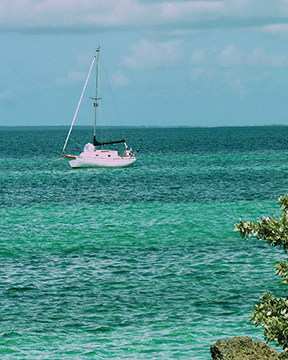
The eastward crossing to the Bahamas at the beginning of June 2011 was a rollicking 15-hour ride against ENE winds reaching 25 knots. Water Bear and its little 8 hp, 1 cylinder Yanmar proved worthy and dependable. Now, four weeks later, thunderstorms had become a daily presence, and we’d been fighting engine problems since refueling in Green Turtle Cay. The engine twice raced to redline RPMs and the stop cable failed to shut it down. On the last episode, I shut the fuel off at the tank, and it was several minutes before the little beast finally choked to death. Afraid of a repeat performance and possible engine damage, we crossed the Little Bahama Banks on sail alone over two light wind, squall-peppered, very long days. Upon arrival at Old Bahama Bay Marina in West End, we pumped out the old fuel, replaced filters, and tightened a loose fuel hose. The engine seemed to be running fine, but we were not able to do a lengthy sea trial.
At 0600 the morning after repairs, and with a favorable passage forecast, Dennis and I quickly cast off from West End and soon were on a port broad reach approaching hull speed. Winds were 16 to 18 knots. The cobalt blue of the deep ocean met an overcast blue-gray sky as we watched West End recede. Frigate birds gave way to sooty terns. Perfect.
“We could get in by 6,” I said, dreaming of pizza and dark beer. “Only if things stay like this,” Dennis warned. They didn’t.
First, the wind dropped to 12 to 15 knots. Then it started an unpredicted shift to the west. Way too soon we had to roll in the genoa and crank up the engine. We were immediately on edge and began to plan for another engine failure. Still, we were staying south of the line from West End to West Palm—not fighting the powerful current that was racing north at 4 knots, but moving much slower. The wind continued to shift and we decided to drop the mainsail to remain on our course and keep south of the line. Henceforth the wind would be square on our nose.
By now, about halfway across, XM weather was showing thunderstorms building over the entire southern half of Florida. The scale was sobering. Apparently, the storm was enhanced by Arlene, the first tropical depression of the season off Mexico. The northernmost part of the storm was reaching toward us with two strong arms, and NMWS posted another severe weather warning. I began praying the engine would keep going and wishing Dennis hadn’t asked for that mid-life challenge.
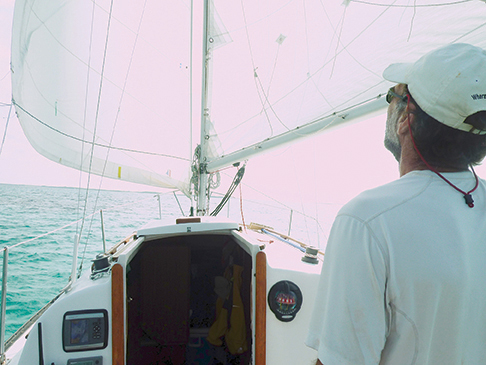
The beauty and the curse of XM weather is that you see it coming. After a long wait, the outer wall finally hit us with sustained 30 knots and occasional higher gusts. The one- to two-foot seas quickly became six to eight feet. We motored into wind and waves, but I wasn’t willing to push the engine too hard. We held position relative to the wind, making no westerly progress as we waited for the edge of the storm to pass.
ADJUSTING EXPECTATIONS
A storm at sea is a wonder to behold. Gray water, slate skies, blowing whitecaps, slashing rain, no land. It’s a sight most never see. Experiencing it in a 25-foot boat adds an exhilarating roller coaster effect. Another sailboat passed in the opposite direction off to port. “Why aren’t they bouncing around?” Dennis asked resentfully. Hmmm, let’s see: they’re going with the wind, their sails are up, and they’re twice our size! I also noted, as they waved cheerfully, that they were quite cozy behind their bimini and dodger. I admit to a momentary touch of envy. But, as the storm continued and our progress didn’t (and doubts about Water Bear’s capabilities began to creep into my brain), a large pod of spotted dolphins joined us. To them, the storm waves meant only fun, and they jumped and frolicked in our bow. Dennis grinned and said, “Now, that’s a good omen!” And it was.
The strong wind and waves lasted perhaps two hours, and we escaped lightning and really heavy rain. But by then we were several miles north of our line. When we tried to motor into the wind and head for Lake Worth Inlet, our progress slowed to almost nothing. If we went with the Gulf Stream we could make good speed, but we would have to go up to Jupiter Inlet or probably further north. That meant another day or so coming down the Intracoastal Waterway and another chance of exposure to “scattered thunderstorms.” Besides, my truck and trailer were in West Palm.
We opted to split the difference. This decision was partly based on a bad assumption on my part that when we got near shore we would get out of the Gulf Stream and could head south and make up time. Not this day. The Stream went all the way to the coast and we crabbed home at a snail’s pace the entire way, not arriving to toss out an anchor until 2330—more than 17 hours after departing West End. Although this seemed like an eternity, it was only a little longer than the eastward crossing. It’s all about expectations.
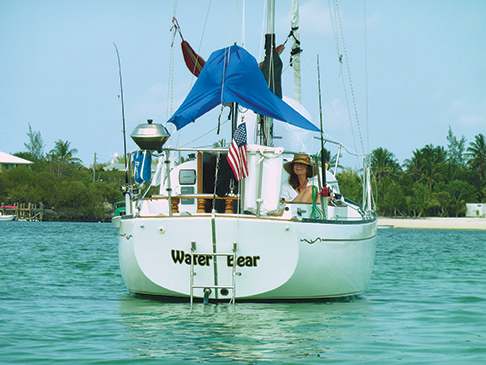
By the time we got the boat hauled the next day and began trailering it home to the mountains of North Carolina, it was clear that our decision to keep heading for Lake Worth yielded the shortest total travel time (land plus sea). Had the storm worsened with stronger wind, rain and lightning, the decision would not have looked so good and a northerly course would have been the obvious decision. Still, I’m glad we met the storm at sea rather than in the ICW. Boats near shore during this storm did not fare well. Conditions were worse there; two boats dragged anchor, hit a bridge and sank in Lake Worth, and one person on a small rental boat in Ft. Lauderdale was reported missing. The fact is, crossing the Gulf Stream in a small sailboat requires patience, fortitude and even a little luck. And storms off Florida make summer crossings dangerous, no matter what the weather window looks like or the size of the boat. From mid-June on, beware.
A couple of days after Dennis and I made it home, we met for coffee. His scraggly one-week growth was shaved, and his face was tan. His smile was broad as we recalled reef squid, dolphins, storms and engine problems. As he walked to his car I thought he stood taller, and his stride was brisk and sure.
Paul Bartels is a professor of Biology and Environmental Studies at Warren Wilson College in Asheville, NC. He is also a USGC licensed captain. Capt. Dr. Paul and his wife Margo sail Water Bear in coastal SC and Lake Fontana along the southern edge of the Great Smoky Mountains National Park when not risking life and limb in the Gulf Stream.
